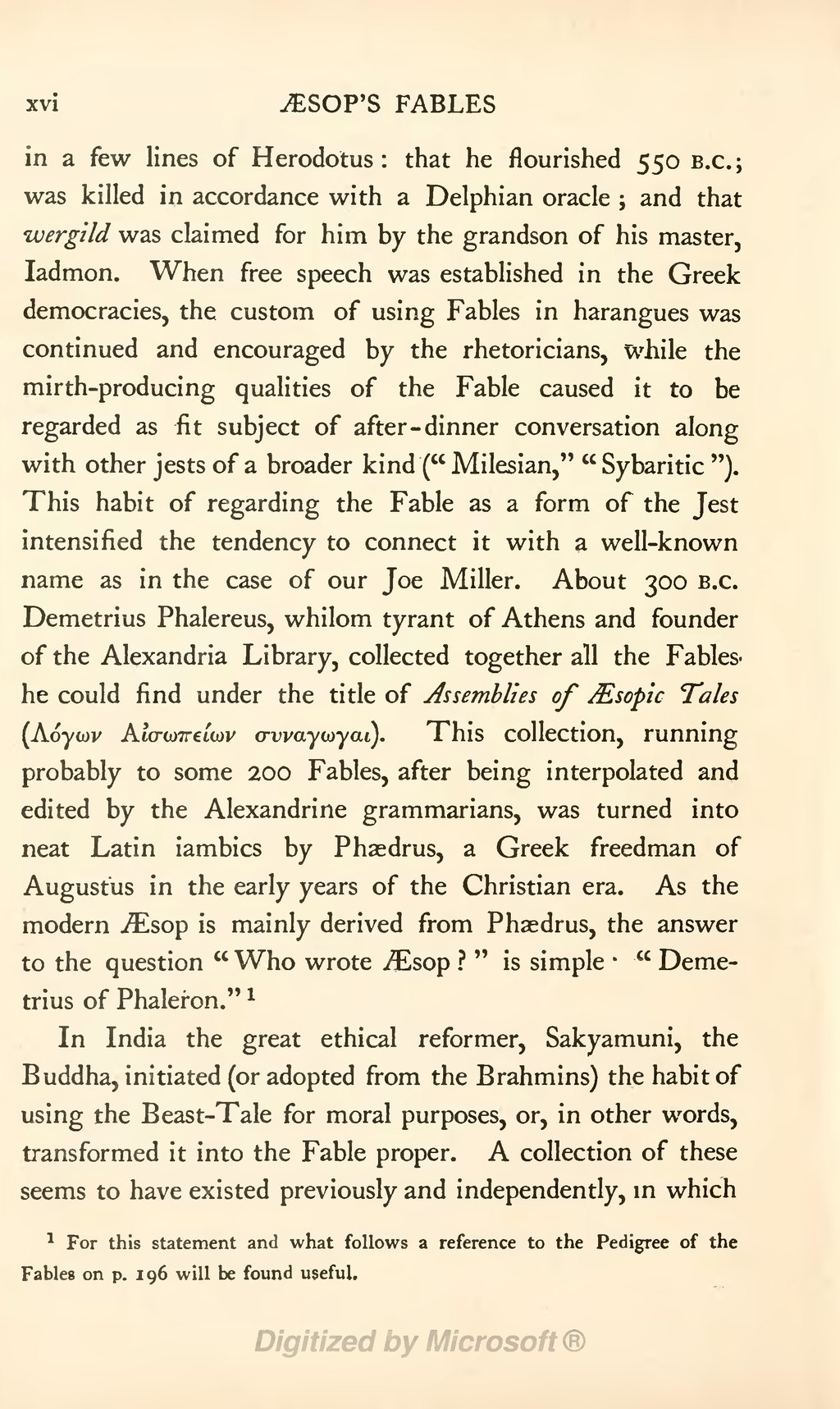in a few lines of Herodotus: that he flourished 550 B.C.; was killed in accordance with a Delphian oracle; and that wergild was claimed for him by the grandson of his master, Iadmon. When free speech was established in the Greek democracies, the custom of using Fables in harangues was continued and encouraged by the rhetoricians, while the mirth-producing qualities of the Fable caused it to be regarded as fit subject of after-dinner conversation along with other jests of a broader kind ("Milesian," "Sybaritic"). This habit of regarding the Fable as a form of the Jest intensified the tendency to connect it with a well-known name as in the case of our Joe Miller. About 300 B.C. Demetrius Phalereus, whilom tyrant of Athens and founder of the Alexandria Library, collected together all the Fables he could find under the title of Assemblies of Æsopic Tales (Λόγων Αἰσωπείων συναγωγαι) This collection, running probably to some 200 Fables, after being interpolated and edited by the Alexandrine grammarians, was turned into neat Latin iambics by Phædrus, a Greek freedman of Augustus in the early years of the Christian era. As the modern Æsop is mainly derived from Phædrus, the answer to the question "Who wrote Æsop?" is simple "Demetrius of Phaleron."[1]
In India the great ethical reformer, Sakyamuni, the Buddha, initiated (or adopted from the Brahmins) the habit of using the Beast-Tale for moral purposes, or, in other words, transformed it into the Fable proper. A collection of these seems to have existed previously and independently, in which
- ↑ For this statement and what follows a reference to the Pedigree of the Fables on p. 196 will be found useful.
